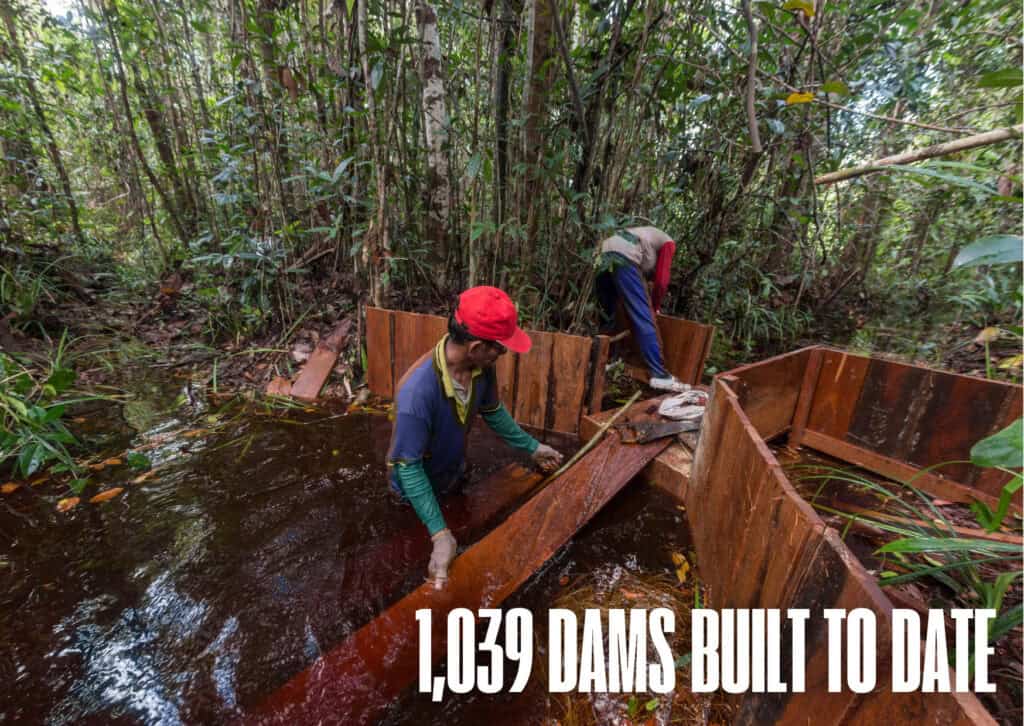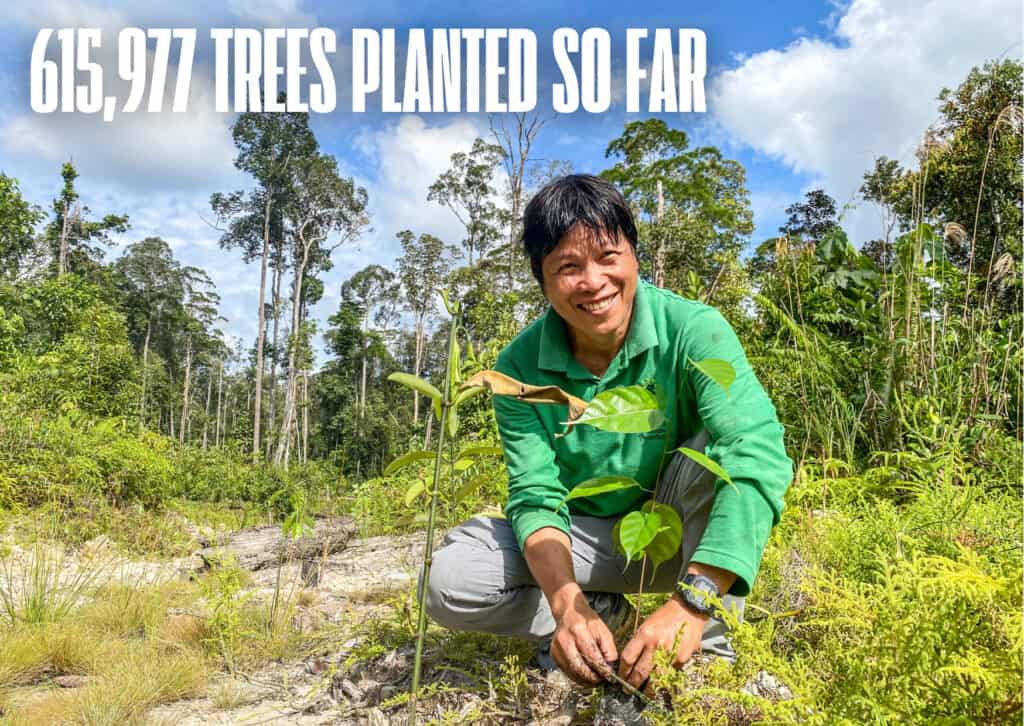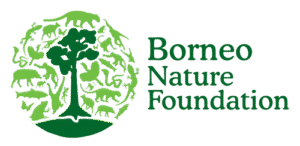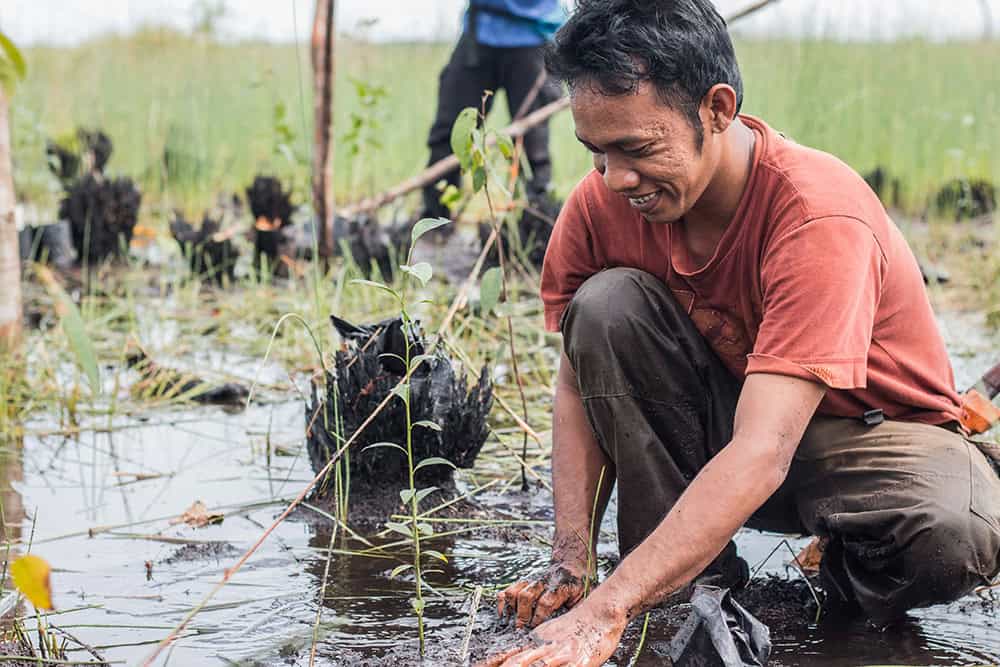First, we learn, facilitating world-leading research to gain a fuller understanding of Borneo’s unique biodiversity. Then, we protect priority ecosystems, using this new scientific insight to guide conservation management and identify threats. And we don’t stop there: we restore degraded areas, breathing life back into drained peatlands and fire-damaged forests to reverse the trend of deforestation. From the ashes, Borneo’s forests can rise again – with a little bit of help from our habitat restoration teams…
Giving a dam about peat

Borneo’s tropical peat swamp rainforests are a globally important carbon store and biodiversity hotspot, home to an incredible array of rare and threatened species, including the Critically Endangered Bornean orangutan. At 570,000-hectares (roughly the same size as the country of Brunei), Sebangau National Park in Southern Borneo comprises the largest unfragmented lowland rainforest in Borneo and Asia’s largest tropical peat swamp.
However, despite its protected status, Sebangau’s peat swamp forest is under threat. Prior to becoming a National Park, Sebangau suffered extensive deforestation during the 1990s, which escalated as sanctioned commercial operations gave way to rampant illegal logging at the turn of the century.
Today, whilst logging operations have long since ceased, a vast network of man-made drainage canals remains. These canals, dug by illegal loggers in the late 1990s to float timber out of the forest, are slowly drying out the peat, stripping it of its natural protection against fire. To combat this, we started blocking the canals in 2010, using specially designed dams drawn up by peat hydrology experts. Monitoring data pre- and post-damming confirms that canal blocking helps prevent the outflow of water, allowing the swamp to fill up again naturally over time.
Fast forward 15 years and we’ve built over a thousand dams in and around the Sebangau National Park, re-wetting and restoring tens of thousands of hectares of this vitally important peatland habitat. 36 canals have now been closed off in their entirety, with an estimated annual emissions reduction of 273,526 tonnes of carbon – the equivalent of taking 218,000 cars off the road for a year!
What’s more, we conduct regular monitoring to evaluate the success of our re-wetting interventions. Years of hydrological data have consistently shown a major increase in water retention post-damming, keeping the peat swamp healthy, wet and fire-resistant, just the way we like it!
Tree planting done responsibly

Tree planting – everybody’s doing it. But there’s planting trees, and then there’s planting trees. Which trees are being planted and where? How many of them survive? Are there any strategies in place to protect the area once it’s been reforested? Not all tree planting initiatives are created equal – after all, what good would planting a monoculture of non-native trees on a prairie do, especially if they all die or end up getting chopped down within a few years?
But planting trees can do an awful lot of good, when it’s done right. In Borneo, replanting trees in fire-damaged areas prevents soil erosion, restores wildlife habitats, and reduces the risk of burning again in future. Moreover, our reforestation initiative provides valuable opportunities to engage local community members in conservation, creating green jobs and avenues for education.
In its first and ongoing phase, our flagship reforestation project aims to plant a million trees in specific rehabilitation zones of the Sebangau National Park. Our integrated firefighting and mitigation strategy has scored some major wins in recent years, including zero primary forest loss during the 2023 dry season, which coincided with a severe El Niño. However, in 2015 and 2019, the region was hit by several major fires which destroyed huge swaths of rainforest habitat. With the support of the Sebangau National Park Agency, we have spent the past five years replanting burned areas of the Sebangau Forest with native seedlings grown in nearby community nurseries (CNs).
We plant 11 different tree species, carefully selected through long-term reforestation trials for their ecological importance and high survival rates. As of 2025, we have 20 CNs supplying seedlings for our reforestation efforts, managed by and providing income for 166 local families. These nurseries currently have the capacity to produce over 220,000 seedlings for planting each year, although this number is expected to increase in future as newer CNs become more established. In addition to providing training and resources to CN managing groups, we also hire community members to assist with the actual replanting. By involving local communities every step of the way, we encourage them to take a leading role in protecting and restoring their local environment.
To ensure the long-term success of our reforestation efforts, we monitor seedling survival at six months post-planting, and then annually for the next ten years. If seedling survival rates dip below the threshold of viability, we evaluate what went wrong, modify our planting strategy accordingly and replant the affected area. Now that’s tree planting done responsibly!
But don’t just take our word for it – our habitat restoration efforts received international recognition in 2020, when we won the UpLink Trillion Trees Challenge People’s Choice Award at the World Economic Forum, and the Keeling Curve Prize. Having made significant headway towards our initial target of one million trees planted in Sebangau National Park, we’ve also set our sights on several potential reforestation areas in the Rungan Landscape. A far cry from the relatively uniform Sebangau Forest, Rungan is a mixed mosaic of dryland and swamp habitat on sandy soils, presenting a unique challenge for our reforestation teams. The first planting trials are currently underway, so watch this space for future reforestation developments in Rungan!
Celebrate 25 years of action with us:
Written by Olivia Pilmore-Bedford, Communications Officer, BNF International

